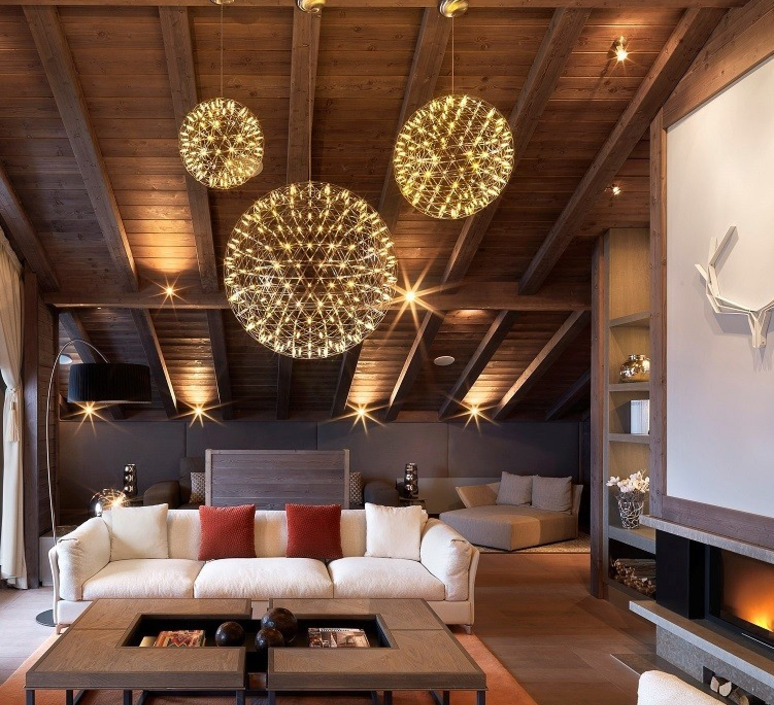
There are many factors to consider before purchasing a large pendant light fixture for your home. These include size, style, placement, and energy efficiency. In addition, you’ll want to consider whether the fixture will add to the overall look of the room. These considerations can make the selection process a little easier.
Styles
Pendant lighting is an easy, inexpensive way to update the decor of any room. There are a variety of styles to choose from, and they’re easy to incorporate into existing decor. Retailers should display many different types of pendant light fixtures so that potential customers can try them out before they buy. They should also allow customers to take home samples for testing. You can even consult with an interior designer about which pendant style is best for your space.
Pendant lights come in a variety of styles and shapes. The most basic type features a single light bulb positioned up inside a globe or under an open shade or reflector. Various other styles incorporate several different head styles. A pendant light can be a source of light for your entire room, or it can be framed to highlight specific parts of the room. For example, a set of caged pendant lights in a home library can give it a magical aura.
Large pendant lights look great in foyers or living rooms. They’re great for creating a theme and tying the entire room together. They can be found in different finishes, including satin nickel, copper, and primary colors. You can also choose between Tiffany and contemporary styles.
Sizes
When choosing large pendant light fixtures for your room, there are many factors to consider. The size of your room is an important factor, but you also have to consider the shape and size of your pendants. For example, if you have a large table, you may want to choose pendants that are less than one meter high. A pendant that is too high will look out of place.
Whether you are lighting an island, or a kitchen island, it is important to choose the correct pendant size for the area. To find out what size pendants you need, measure the width of the island in inches, and then subtract 12 inches from that measurement. The difference is the maximum diameter of the pendants you need. You’ll also need to consider the length of your island, and allow 16 inches between each pendant to give the room the right look.
Choosing the right size pendant is crucial for the overall look and feel of your room. The right size can make a room look more elegant, and can add personality. However, you should choose one that is not too tall, or you’ll end up wasting money on a light that doesn’t fit. The average kitchen pendant light fixture is about twelve to thirteen inches tall.
Placement
When planning to install large pendant lights in your kitchen, it’s important to think about where you’d like them to go. Ideally, they should hang over the island and not obscure sight lines. To help you find the right location, you can use the “balloon method”: hang a balloon over each island and measure the width of the island to determine how far the pendants should be from each other.
The height of the light fixture depends on the height of the ceiling. Divide the ceiling height by two or three, and you’ll have an approximate height for the pendants. Using this method, you can determine how many large pendants you can hang from each ceiling height. Alternatively, you can use the table length to determine how high the pendants should be.
Large pendants should be spaced at least thirty inches apart. If you have a long dining table, cluster the lights in clusters to draw attention to the bar. Using clusters of large pendants will help keep the area from looking overcrowded.
Energy efficiency
When choosing a large pendant light fixture, it is important to know how much energy it uses. This is measured in watts. Similarly, the color of the light is measured on a Kelvin scale, where the lower the number, the more yellow it will be. A higher Kelvin number, on the other hand, means a whiter, more blue light. Light bulbs should be labeled with this information. You should also look for Energy Star approved fixtures.
It’s important to note that the energy efficiency of large pendant light fixtures is highly dependent on the type of light bulb used in them. For example, an 80-watt incandescent fixture can be replaced by a twenty-watt LED fixture. You can also try a lower-watt LED alternative if you’d prefer. The wattage of the light bulb is not always an indication of the light it produces, so you should experiment with different types and choose the one that produces the most light. It’s also important to note that the color temperature of the light can affect the energy efficiency of the fixture.
Large pendant light fixtures are often paired with dimmer switches to control the brightness and color. This allows them to be adjusted easily to suit various settings and tasks. This can be a great benefit in homes with kids or animals, where you may want to have more flexible lighting.

